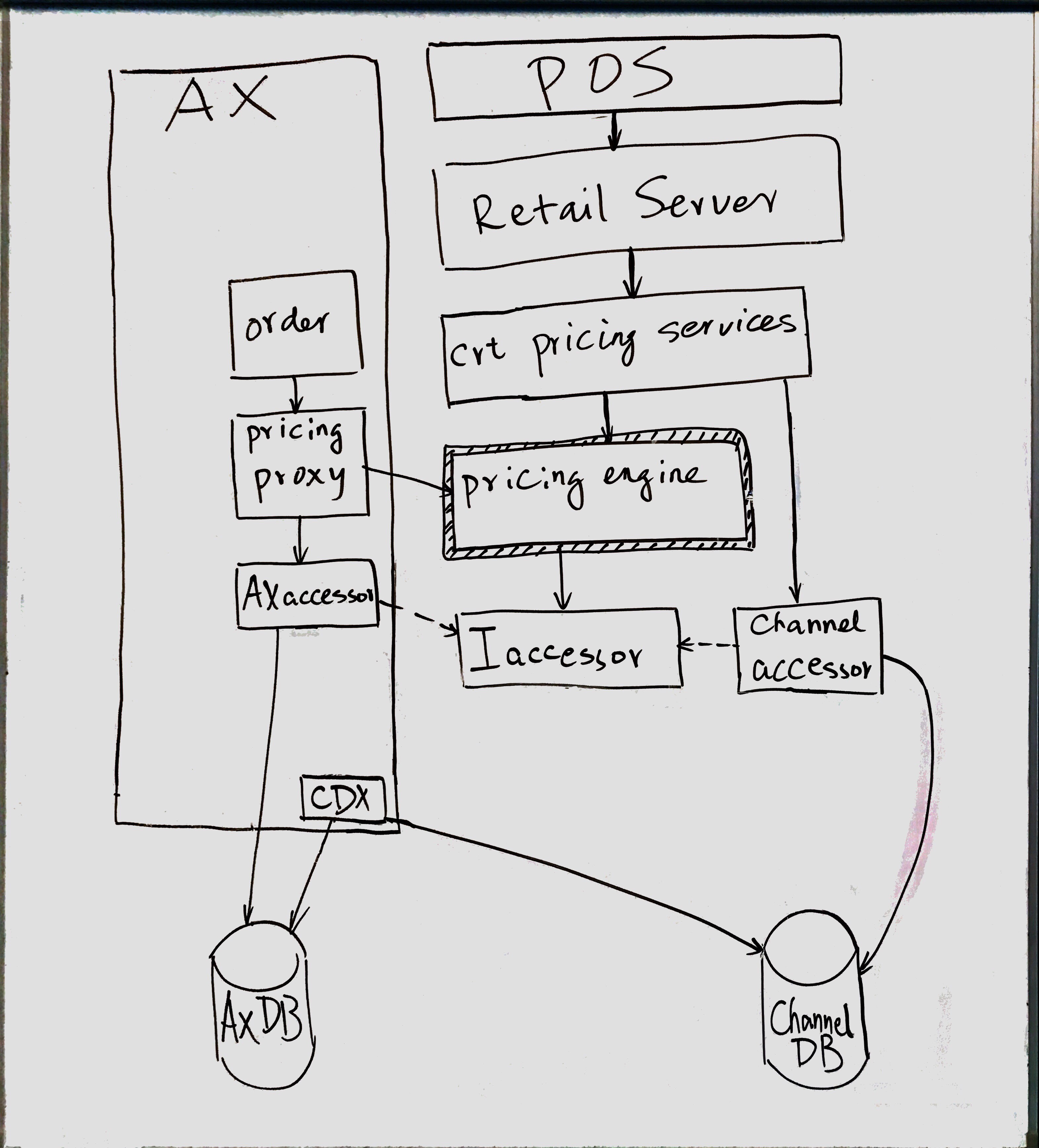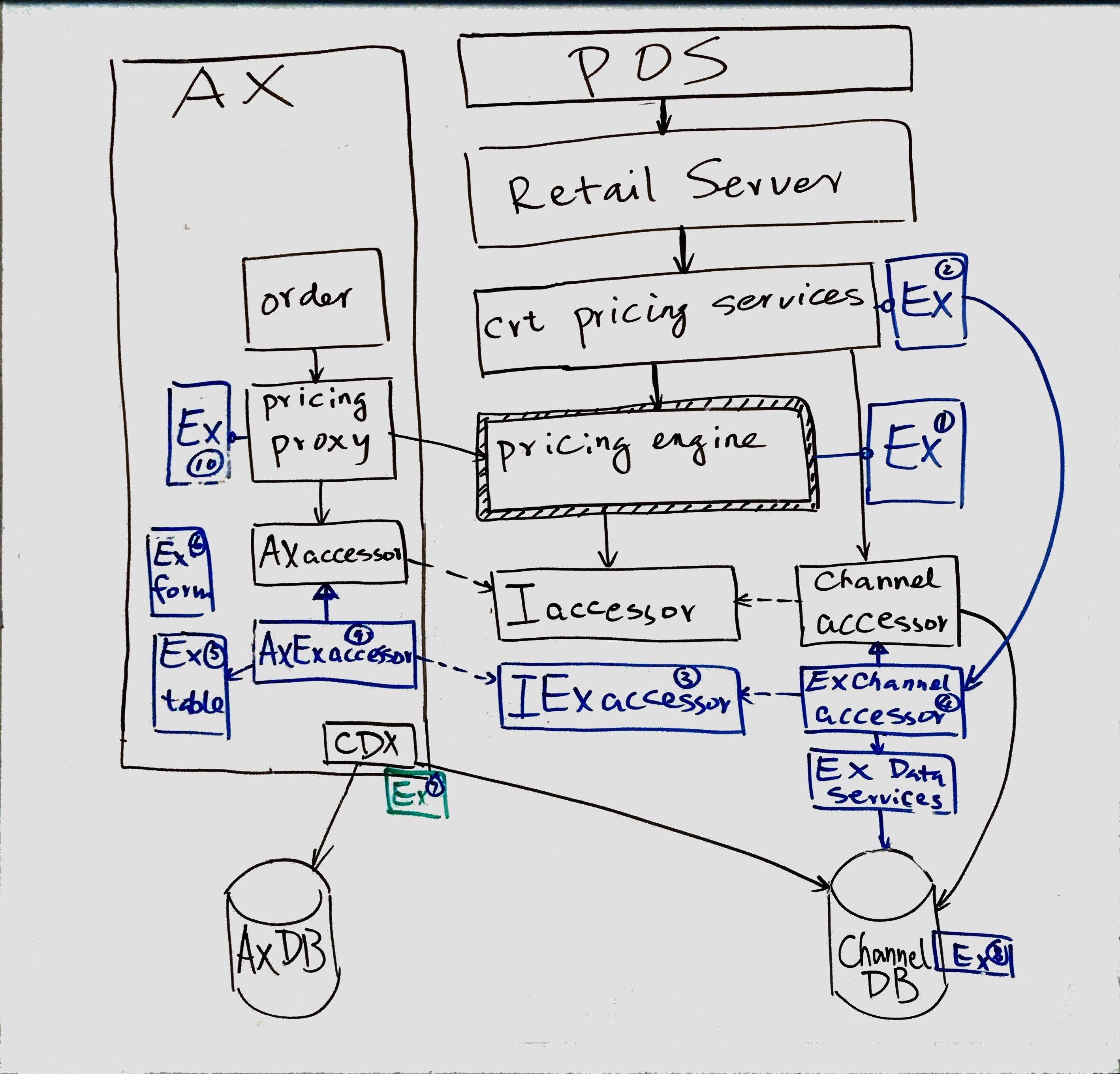Ask Learn
Preview
Ask Learn is an AI assistant that can answer questions, clarify concepts, and define terms using trusted Microsoft documentation.
Please sign in to use Ask Learn.
Sign inThis browser is no longer supported.
Upgrade to Microsoft Edge to take advantage of the latest features, security updates, and technical support.
Note
Access to this page requires authorization. You can try signing in or changing directories.
Access to this page requires authorization. You can try changing directories.
Update - this blog post has been moved to Dynamics 365 Community.
Prerequisite: we assume you are familiar with Dynamics Retail Commerce Runtime framework and Dynamics AX.
All retail channels: store POS, call center orders and store front orders share the same pricing engine. Call center is part of AX, while POS and store front utilize commerce runtime framework via retail server, so we have two pricing engine invocation patterns.
In addition, to accommodate the difference in data access, we have IPricingDataAccessor. When retail server calls pricing engine via pricing services, pricing services would construct channel version of the data accessor, while AX would construct its own.
The following diagram illustrates the main flow and difference between AX and channel side implementations.

Say, we are creating a new discount type.
The number in parenthesis corresponds the number in the diagram.

We will go over details in coming posts.
Related: Dynamics Retail Discount Extensibility Overall Approach
Related: Dynamics Retail Discount Extensibility – Three Discount Categories
Related: Dynamics Retail Discount Extensibility – Register a New Discount Type
Ask Learn is an AI assistant that can answer questions, clarify concepts, and define terms using trusted Microsoft documentation.
Please sign in to use Ask Learn.
Sign in